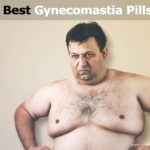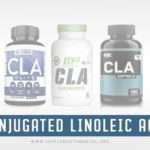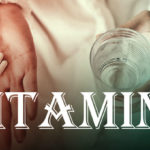
Early studies on prohormones (over-the-counter androgens or testosterone precursors) examined the acute hormonal response to their consumption.
Androstenedione became famous through professional baseball’s single-season home run king, Mark McGuire. His admission that he consumed and/or, as the lay press used to call it, sparked a firestorm of scrutiny.
At the time, no studies were available to assess the effectiveness of this particular prohormone.
However, a few published reports (abstracts and full-length papers) dig into plasma hormone levels (acute and chronic responses), body composition, and exercise performance changes after prohormone supplementation.
Prohormone research
Earnest et al. examined the acute effects of androstenedione and -diol administration in eight young men (24 years). Using a double-blind, placebo-controlled, crossover design, eight men ingested a placebo, androstenedione (200 mg), and androstenediol (200 mg). At 30, 60, 90, and 120 minutes, the researchers collected blood samples.
They found that the mean area under the curve for total testosterone was greater in the androstenedione group versus the placebo. However, there was no difference between the androstenedione and -diol groups.
A similar pattern was seen in the free testosterone data. However, “the appearance and apparent conversion to total and free testosterone over 90 min was stronger in the [androstenedione] treatment than the [androstenediol] treatment” according to Earnest et al.
Finland research
In a study at the International Conference on Weight Lifting and Strength Training in Finland,6 Dr. Tim Ziegenfuss of Eastern Michigan University examined temporal changes in plasma testosterone following the ingestion of two different over-the-counter androgen preparations.
Using a double-blind, placebo-controlled, crossover design, seven healthy male subjects (mean age 28 yrs, weight -78 kg) ingested each of the following in a randomized order:
- Placebo
- 100 mg of Androstene(4-androstene-3,17-dione or 4androstenedione)
- 100 mg of Androdio (4-androstene3-beta, 17 -beta-diol or 4-androstenediol).
Androstene (4-androstenedione) had no significant effect on total or free testosterone concentrations. On the other hand, Androdiol (4-androstenediol) produces a significant increase in total and free testosterone.
At 60 and 90 minutes post-ingestion, total testosterone increased by 40% – 48% and free testosterone increased by 29% to 43%.
They found no changes in heart rate, blood pressure, or blood pressure products during the testing period.
The effects of an androgen administered as a sublingual/buccal agent were also examined by Ziegenfuss et al.
Eight men were administered a placebo and 150 mg of various androgens (Androstat6) in a counterbalanced fashion.
The 150 mg of androgens were comprised of the following: 125 mg of 4-androstene-3, 17 -idol and 5 mg each of 4-androstene-3, 17-dione, 5-androstene-3, l7dione, 5-androstene-3, 17 -diol, 19-nor-4-androstene-3,17dione, and 19- nor – 5-androstene- 3,17 -diol.
Fasting venous blood samples were collected at 0, 10, 20, 40, 60, 90, 120, and 180 minutes post-ingestion.
An increase in total testosterone values peaked at 40 minutes (98% increase); however, by 180 minutes values returned to baseline.
Furthermore, this acute dose of sublingual androgens did not affect isometric strength, vertical jump, or a 30-second bicycle sprint.
Ziegenfuss examined the effects of a much higher dose of the same sublingual androgen preparation.
Other studies were conducted
Fourteen recreationally active, eugonadal men were given a placebo or 450 mg of the sublingual androgen preparation (divided into three 150-mg doses) for 4 weeks. Various performance and blood chemistry parameters were measured.
The androgen-supplemented group had significant increases in body mass 0.8 kg, 2.3%), fat-free mass (0.8 kg, 1.1%), vertical jump (5.1 cm, 9.3%), total body water (5.4 L, 10.5%), and extracellular fluid volume (2.3 L, 11.8%). No changes occurred in the placebo group for any of these measures.
There were no changes in basal hormone concentrations (i.e., testosterone, estradiol, LH) for either group.
This would suggest that despite the anabolic properties of this androgen preparation, there was no negative feedback effect on the hypothalamic-pituitary-gonadal axis.
Furthermore, there was no change in either group for serum cholesterol, triglycerides, LDL-C, and organ function (i.e., blood urea nitrogen, creatinine, aspartate aminotransferase, alanine aminotransferase, lactate dehydrogenase, and creatine kinase).
Oddly, however, HDL-C concentrations increased in both the placebo and androgen-supplemented groups.
Another test on bodybuilders
In a series of case studies using the same sublingual androgen preparation, six male Caucasian bodybuilders were monitored for 6-10 weeks in which they self-administered 150 mg of the steroid daily.9
Physical performance (1-RM bench press, right knee extensor peak torque) and body composition (dual x-ray absorptiometry analysis and skin folds) were assessed pre- and post-treatment.
There was little change in body weight (-052 kg), body mass index (-0.15), lean body mass (-0.22 kg), fat mass (+0.28 kg), and percentage fat (+0.4%).
The mean change in 1-RM bench press strength and peak torque was + 7.95 kg and +4.9 kg-m, respectively. Thus, in this small population of well-trained male bodybuilders, supplementation with 150 mg/day of this steroid for up to 2 months has no effect on body composition and only a slight effect on muscular power and strength.
In a case study performed on a highly trained bodybuilder androstenedione supplementation at a dose ranging from 200-400 mg per day over an II-week period resulted in a rise in percentage body fat and a loss of lean body mass. However, there were no changes in liver function or blood lipids.
JAMA research
Perhaps the most publicized study in the ephemeral history of prohormone research was the JAMA study by King and associates.
This study will be reviewed in detail because of the tremendous publicity generated by it. Some have viewed this experiment as proof that androstenedione was a harmful and useless ergogenic aid.
In this investigation, they took 30 untrained, normal testosterogenic men who were not taking any dietary supplements including hormones.
20 people did full-body resistance training for 8 weeks. During weeks 1, 2,4,5, 7, and 8 men (randomly assigned) consumed either androstenedione 000 mg/day) or placebo. Also, the effect of a single dose of 100 mg of androstenedione was assessed in 10 men.
In essence, they found that short-term administration of androstenedione had no effect on acute hormone concentrations (i.e., free and total testosterone).
However, serum estradiol concentrations were higher after 2, 5, and 8 weeks compared with baseline values in the androstenedione group. Also, serum estrone was higher at weeks 2 and 5 in the androstenedione group but by week 8, there were no differences in serum estrone between groups.
Body composition, muscle fiber cross-sectional area, and exercise performance (i.e., knee extension strength) improved similarly in both groups.
The increase in lean body mass and drop in fat mass were similar between groups. Regarding serum chemistry, there were no changes in LDL-C, VLDL-C, triglycerides, liver function enzymes, or iron and red blood cell status.
However, there was a significant 12% decrease in HDL-C after 2 weeks and this remained depressed at weeks 5 and 8.
On the surface, it seems that androstenedione is useless for improving body composition and exercise performance further, its effects on HDL-C concentrations may have cardiovascular health implications. However, there are a few salient points that are worth mentioning concerning this study.
First, the subjects in this study were untrained and fat (mean percentage fat = 21.3 and 23.5%, for placebo and androstenedione groups, respectively).
Untrained subjects will likely improve their body composition and exercise performance from training alone. This might mask any possible ergogenic effect of the supplement. Also, the body fat levels of these subjects might explain in part why they had unusually high estrogen concentrations. Serum estradiol concentrations of these subjects were> 200 pmol/L.
There is an enhanced conversion of androstenedione to estrogens in obese males. Also, it is not known why the androstenedione-supplemented group had higher plasma testosterone concentrations at baseline and at the end of the study than the placebo group.
From these data, it is clear that androstenedione does not cause depression of plasma testosterone and does not harm the hypothalamic-pituitary-gonadal axis (i.e., no change in LH or FSH concentrations).
Regarding body composition data, it is true that there were no statistically significant differences between groups (both improved); however, it is worth noting that the androstenedione-supplemented group had an average fat mass loss of 2.2 kg, whereas the placebo group lost an average of 0.8 kg.
Final thoughts
With the limited data available, there are a few points that can be made.
First, oral and sublingual androstenedione and -dial ingestion can produce a transient increase in plasma testosterone concentrations.
Whether this increase translates into a meaningful change in body composition is debatable.
Data from Ziegenfuss 7 ,8 suggest that high doses of a sublingual androgen preparation can improve body composition within 4 weeks while much lower doses have no effect on bodybuilders 9. On the other hand, King et al. 10 show no effect of androstenedione in untrained males.
A case study in a highly trained bodybuilder showed that androstenedione supplementation increased fat mass and decreased lean body mass.
In asmuch as bodybuilders and athletes, in general, are the primary consumers of these products, one might question the relevance of studies performed on untrained individuals.
Nonetheless, the data on and/or are far from promising. As far as potential health concerns, there is little evidence that prohormone consumption has permanent harmful effects.
However, further studies using trained subjects, higher doses, and longer treatment durations are needed to fully assess the effects of these compounds.



